the Doors of Zanzibar
There are a few cities in the world with a concentration of antique wooden doors like Stonetown, Zanzibar. The doors are elaborate carved from hardwood, typically fashioned with nail-less joinery, and decorated with studs and bosses of iron or brass.
A fusion of Swahili, Omani and Indian styles, these portals have become the indelible symbol of Stonetown, now a UNESCO World Heritage site. Distinctively Omani are the flat lintels while the Indians prefer semi-circular ones. Another Indian derivitave are the brass studs which first functioned as spike deterrents against elephants during clan wars in the Indian subcontinent. Symbolim is heavy. Oriental symbols for prosperity are the carvings of lotus and rosettes. Most favored of the decorations though are Islamic in nature, as shown by Arabic inscriptions from the.
When in Stonetown, photographing these antique wooden doors became one of my favorite past-times. I even consider myself lucky having purchased a rare copy of the Doors of Zanzibar, as photographed by Uwe Rawu and written by Mwalim Mwalim. A veritable guidebook for door lovers like me, it lays out a map of some 200 heritage portals in Stonetown.
Here are a few glimpses of these cultural gems:
This door could be of a native Swahili Muslim home. The flat lintels (crossbeam across the top of the door) are Omani architectural preferences. The Arabic inscription above the door can still be deciphered.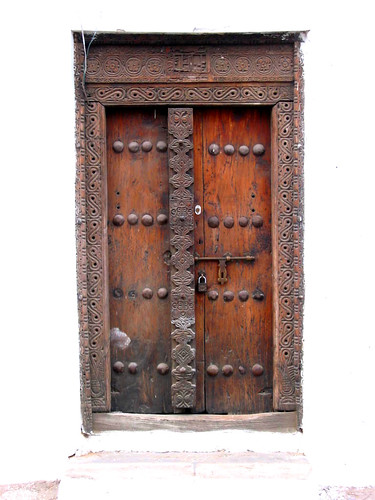
Tanzania is lucky to still have forests of hardwood. This door is new as the hotel was built in the 1990s. But the materials they used were impressive- solid thick close-grained rosewood. 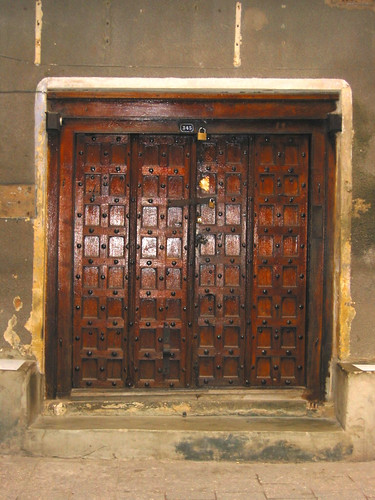
The filigree of the doorpost and lintel is crumbling with age and the door is weather-beaten. But finally I found a door that is open! Feels voyeuristic having a peek inside. The inscription on the building showed the year the house was built. 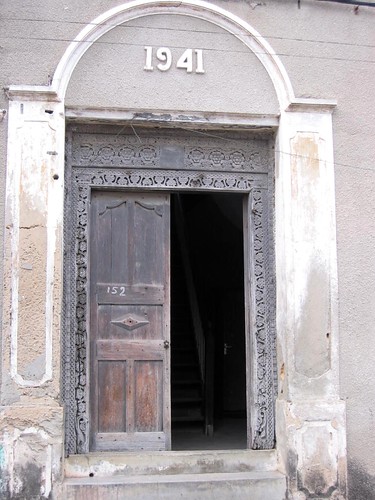
This white door, rickety as it is, retains a charm that is wholly Zanzibar. Obviously constructed from heavy hardwood, it has a Koranic carving on the lintel which I most unfortunately cropped (alas!). The locks and studs and the intricate carving evoke the time when slaves used to be traded in this historic East African island port.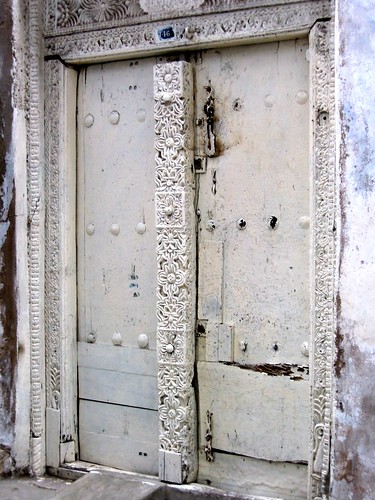
This is another door which has a plaque in Arabic. The repetitive lotus design is Oriental style.

Below is one of my favorite doors, with an elegant symmetry and delicate filigree carvings.
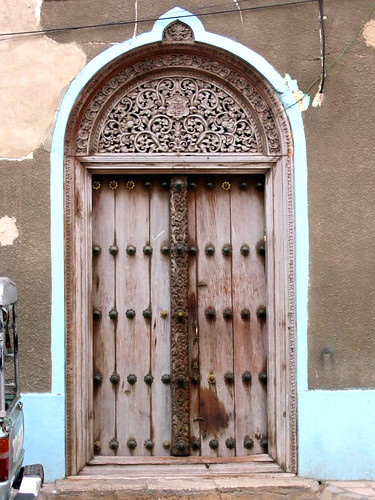
Restoration funds, like in any third world country, are wanting in Zanzibar so many doors are in need of upkeep. Some of the doors even have missing brass studs. Replacements are expensive. I asked and the large traditional ones are about $10-20 each, depending on design.
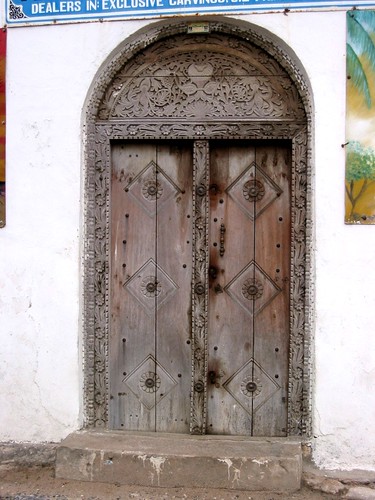
One building which has real massive doors is the Beit el-Ajaib or literally the House of Wonders is a truly remarkable building which is now more than 100 years old. It started as a ceremonial palace for Sultan Barghash which boasted of the first electric light and elevator in the island. Now a National Museum, it is one of the largest buildings in Zanzibar.
Its main door bears a rather English-looking coat of arms, which probably was the seal of the sultan of Oman.
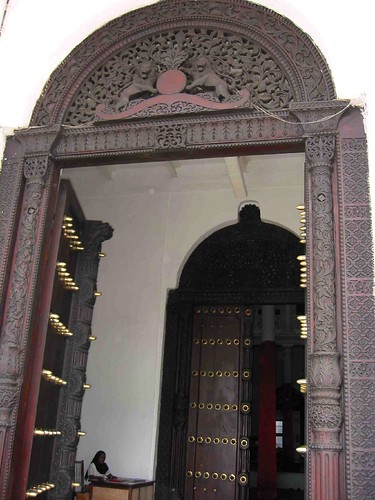






1 comment:
What a nice piece of article and information. The door photos are very good - if would have been go to also put the age of each door.
Thanks Mahmood
Post a Comment